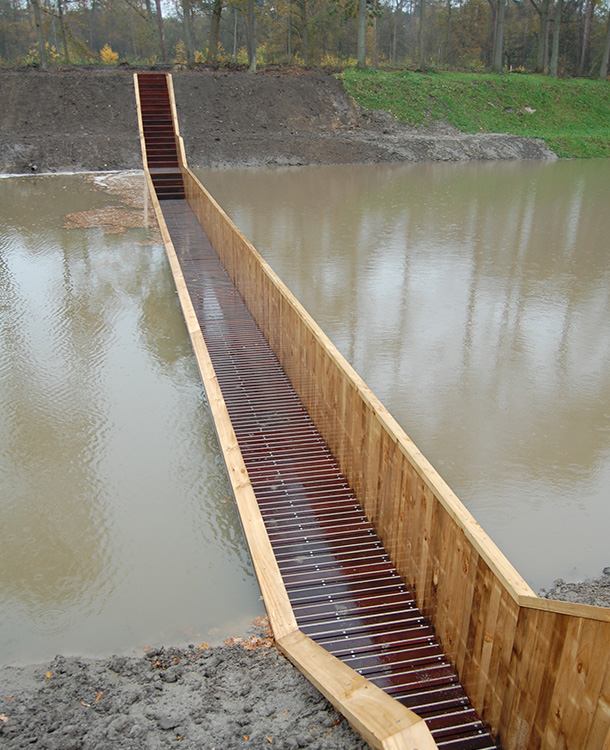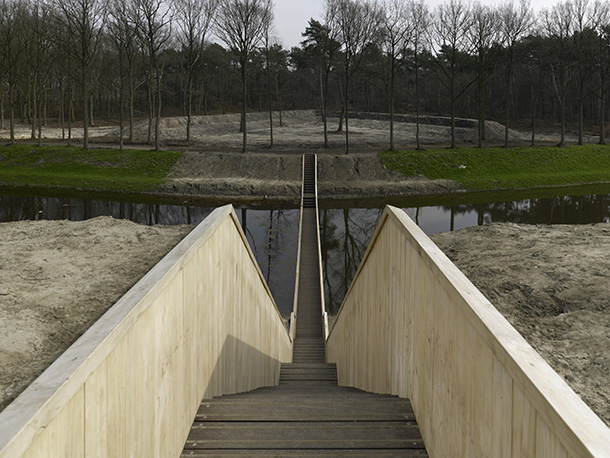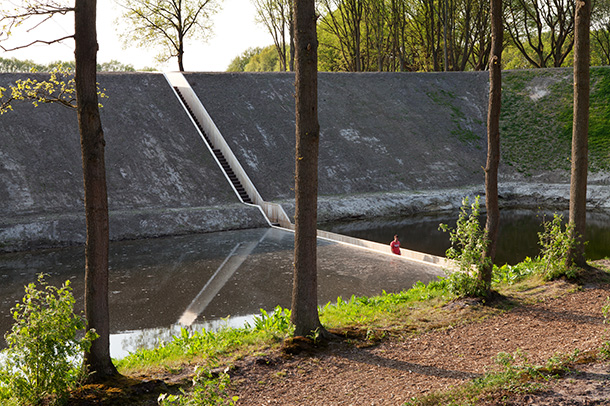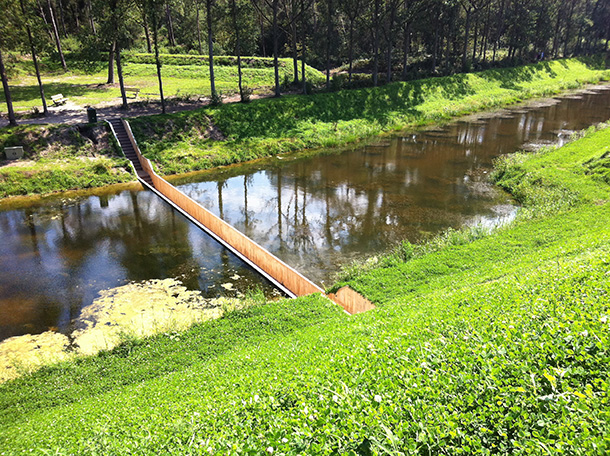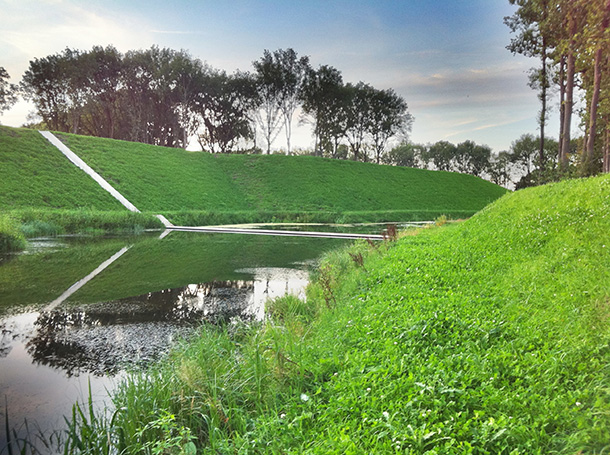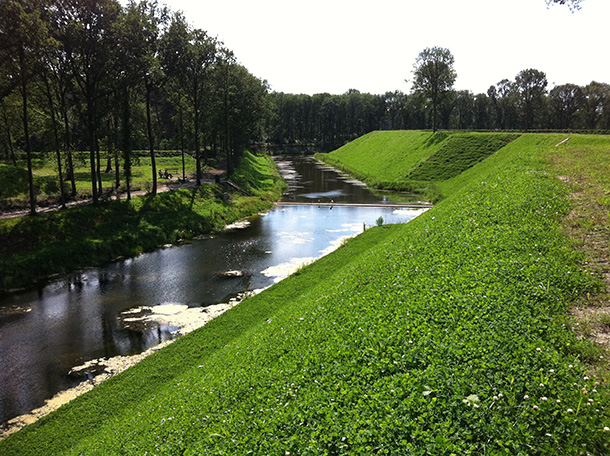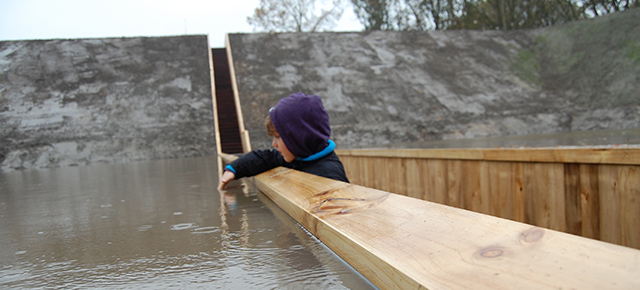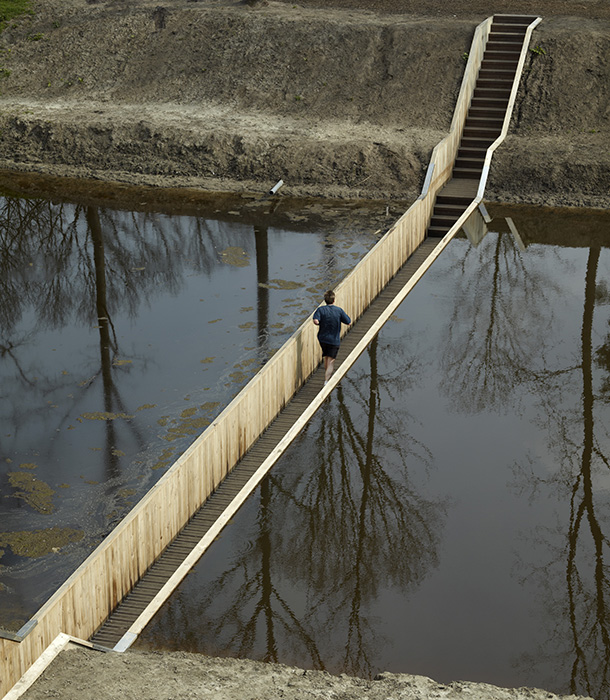
The West Brabant Water Line is a defence-line consisting of a series of fortresses and cities with inundation areas in the south-west of the Netherlands. It dates from the 17th century but fell into disrepair in the 19th century. When the water line was finally restored, an access bridge across the moat of one of the fortresses, Fort de Roovere, was needed. This fort now has a new, recreational function and lies on several routes for cycling and hiking.
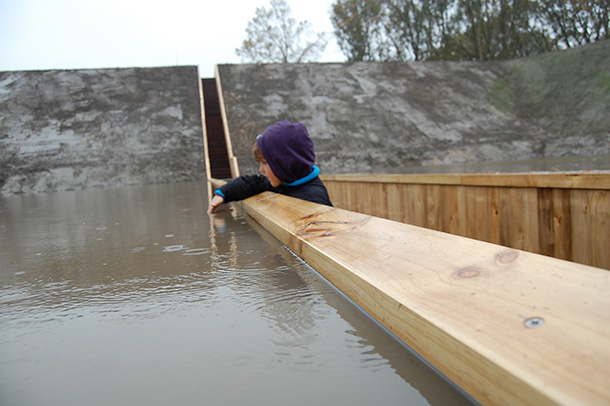
The architects of the new bridge were Dutch architectural practice Ro&Ad Architecten. They considered that it was highly improper to build bridges across the moats of defence works, especially on the side of the fortress the enemy was expected to appear on. That’s why the architects decided to design an ‘invisible’ bridge.
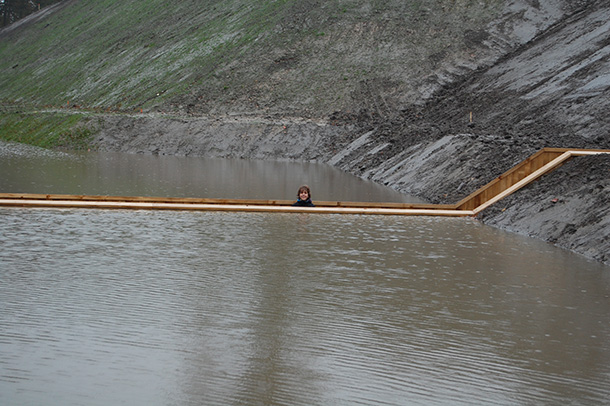
The entire construction, which is made of high technology Accoya wood and waterproofed with EPDM foil, is recessed into water and ground. The bridge lies like a trench in the fortress and the moat, shaped to blend in with the outlines of the landscape. It can’t be seen from a distance because the ground and the water come all the way up to its edge. When you get closer, the fortress opens up to you through a narrow trench. You can then walk up to its gates like Moses on the water.
